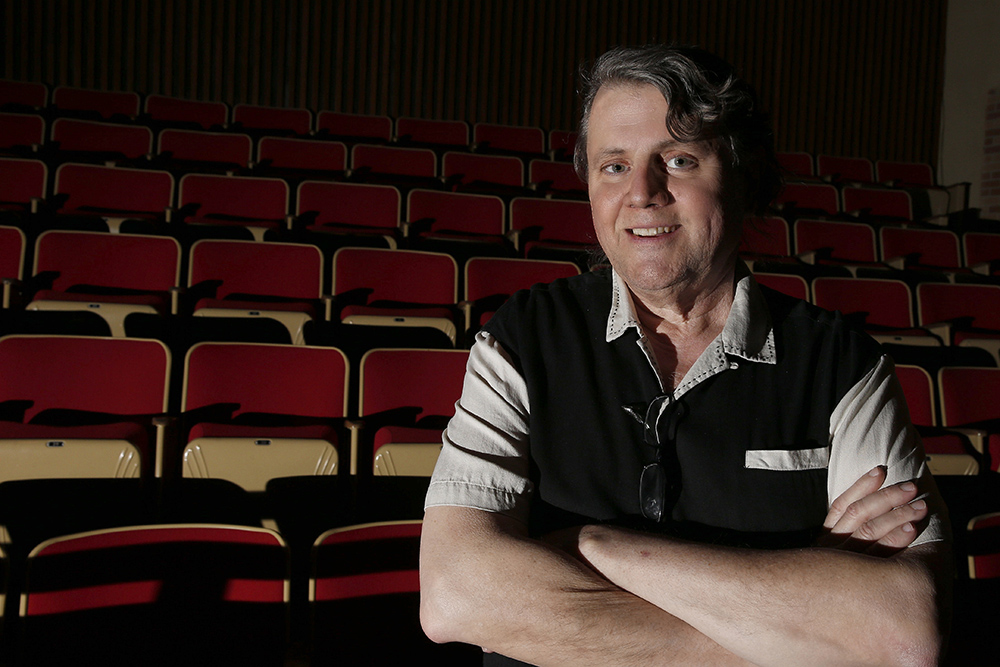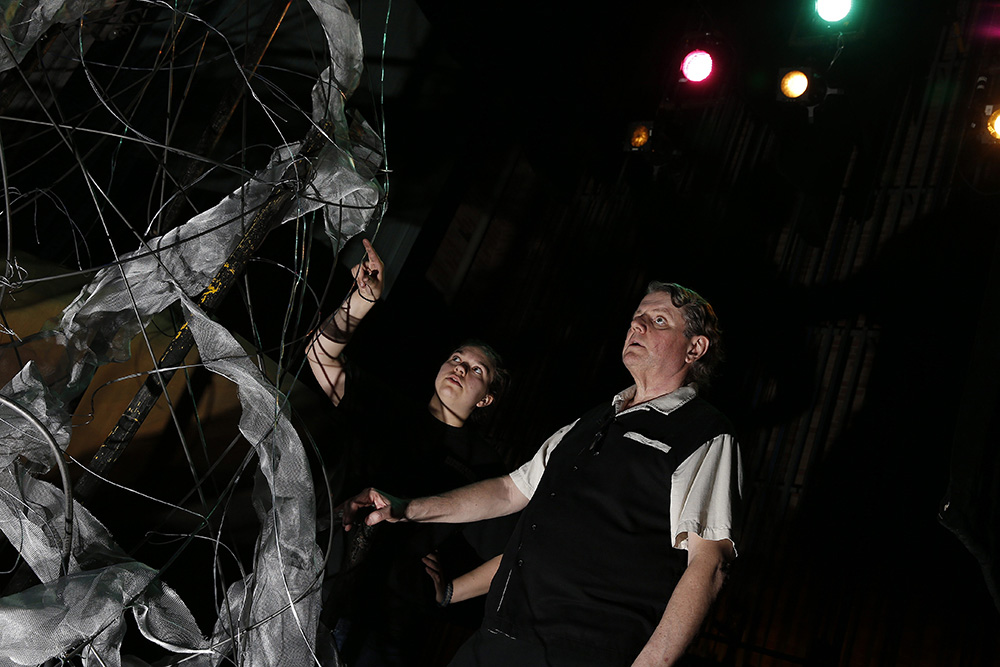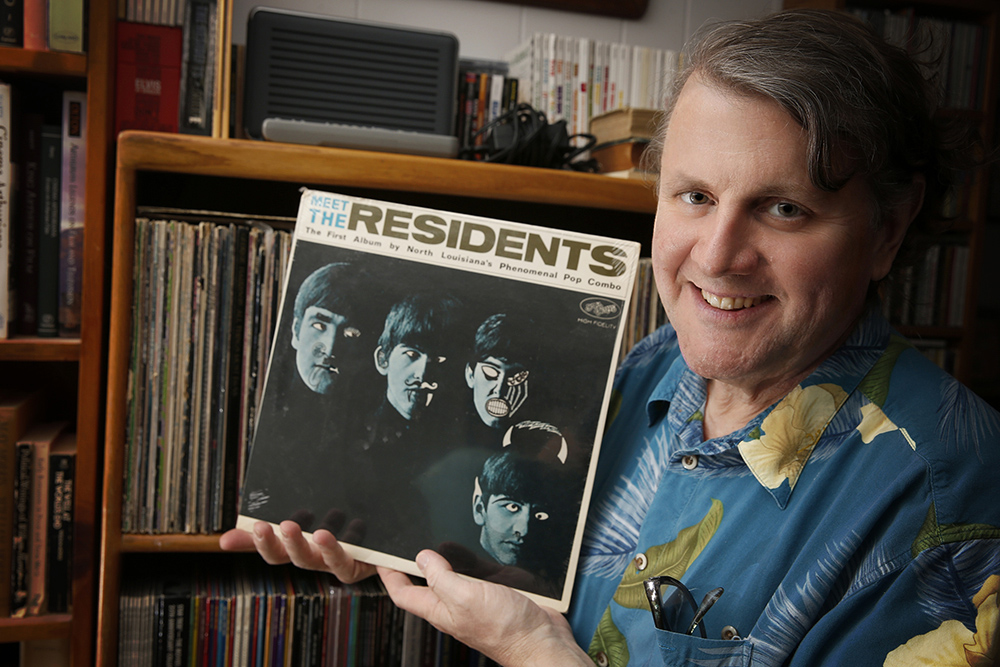By TODD GOTTULA
The modest, two-story house on First Corso Street is where it all started.
This is where Sam Umland and other boys in Nebraska City played baseball on a backyard diamond built by his father. Complete with pitcher’s mound, bases and backstop.
This is where Sam regularly rode his tricycle to the home of his grandparents, who lived just down the street.
And this is where his mom, Sarah, read to him and nurtured his love of books.
“I grew up surrounded by family. Relatives, cousins, grandparents – everybody was right there,” Umland says. “It was a very pleasant childhood. I’m very fortunate because I had a nice, sweet family and wonderful upbringing.”
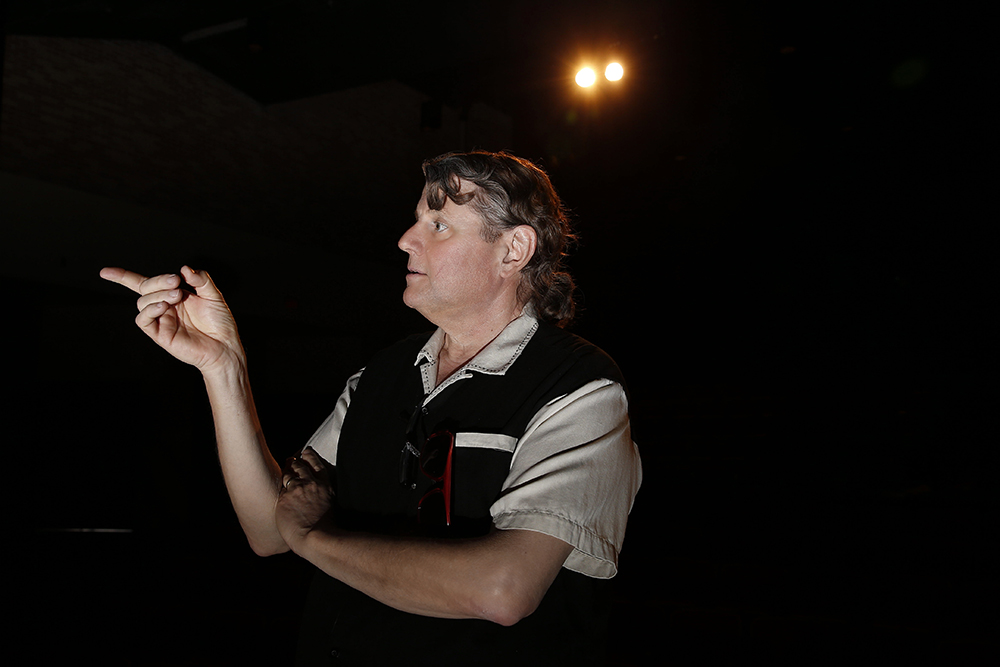 That upbringing included an early appreciation and deep interest for movies.
That upbringing included an early appreciation and deep interest for movies.
Movie nights were common in the Umland home.
Sam’s parents, his older sister, Jane, and two older brothers, Terry and Tom, gathered in the living room.
They made popcorn on the stove. “In a pan, with a heavy lid and lots of oil,” Umland recalls. They washed it down with soda and Kool Aid.
Sam always grabbed a pillow and spread out on the floor in front of the black and white Zenith.
Umland loved Westerns. “‘Gunsmoke’ and ‘The Westerner’ were my favorites,” he says.
The Wonderful World of Disney was another family favorite.
“I didn’t realize it then, but movies were taken very seriously in our home,” Umland says. “I was intrigued by movies from a young age.”
Umland follows with a long pause.
Fifty years have passed since those family movie nights. And here he is, still talking about those first movie-watching experiences.
“They always had a lasting impact in my childhood. I always had a great respect for films, even at 7 years old,” he says. “Movies were more than entertainment for our family. They were morality tales. They were homilies.”
In high school, Umland gained an even greater appreciation for films when a customer at his family’s bowling alley, Father Downs, began taking him to area theaters.
“That enabled me to see controversial films and other questionable stuff I normally wouldn’t have been able to see and study,” explains Umland.
Umland was exposed to award-winning features such as “Midnight Cowboy,” “Alice’s Restaurant,” “Little Big Man,” and other films not available in Humboldt, Kan., where he graduated high school.
“I didn’t always understand what I was seeing. But on those drives home with Father Downs after the movies, I would get lectured. We would talk about the films, and he would explain the lessons involved. I can still remember those conversations. Even at that age, I enjoyed breaking films down and having Father Downs rhetorically expand on these movies. I always took it very seriously.”
In 1974, while taking a film series class at the University of Kansas, Umland saw a film that eventually led to one of his most coveted research projects.
Written and produced by legendary British filmmaker Donald Cammell, “Performance” was released in 1970 and starred Mick Jagger of The Rolling Stones. The movie includes graphic sexual scenes and is considered one of the most twisted, unsettling and drug-fueled movies released in the ’70s.
“That film absolutely changed my perception of movies. It was a moment of a mind going Nova of what cinema could do,” Umland reveals. “It was condemned at the time as being filthy, full of hippies and drugs. But it was brilliant.”
Umland was so moved by the film that 32 years after first seeing it, he published his book “Donald Cammell: A Life on the Wild Side,” co-written with his wife Rebecca. Released in 2006, it was the first biography written about the legendary British filmmaker. The book examines Cammell’s early career as a portrait painter, his completed films, and the many uncompleted projects and unpublished screenplays.
“Performance” established Cammell as one of the great talents in British cinema, says Umland, but his career never flourished. He completed just three more films and committed suicide after his 1995 film “Wild Side” was cut by the producer.
Umland says Cammell’s provocative subject matter and decadent lifestyle inspired a generation of young filmmakers such as Quentin Tarantino (“Kill Bill”), Steven Soderbergh (“Sex, Lies, and Videotape”) and Roger Avary (“Killing Zoe”).
“I felt that he had been ignored, and that was unfair. He made a hugely significant film, yet he was given a short shrift in film history. I wanted to fix that,” Umland says of Cammell. “My motivation for that research was nothing more than I thought it was an injustice that he had been ignored.”
Hot Press magazine in Ireland named “Donald Cammell: A Life on the Wild Side” its 2006 book of the year, and it was reviewed in the London Times, London Guardian, Daily News (Scotland), Le Monde (France), Ikonnen (Germany), Film Comment, Sight and Sound and Film Review (UK), in which it was named “Book of the Month.”
Umland says men such as Cammell and American science fiction writer Philip K. Dick, another subject of his research, fascinate him.
“Their work is rich and philosophical. Take Philip Dick, for example. He is a religious thinker, but he writes about philosophical questions as science fiction. That is why I like popular art. I do think there are means of accessing big questions. You can find a way into a philosophical subject, discipline or religious question through popular art. That is who I am.”
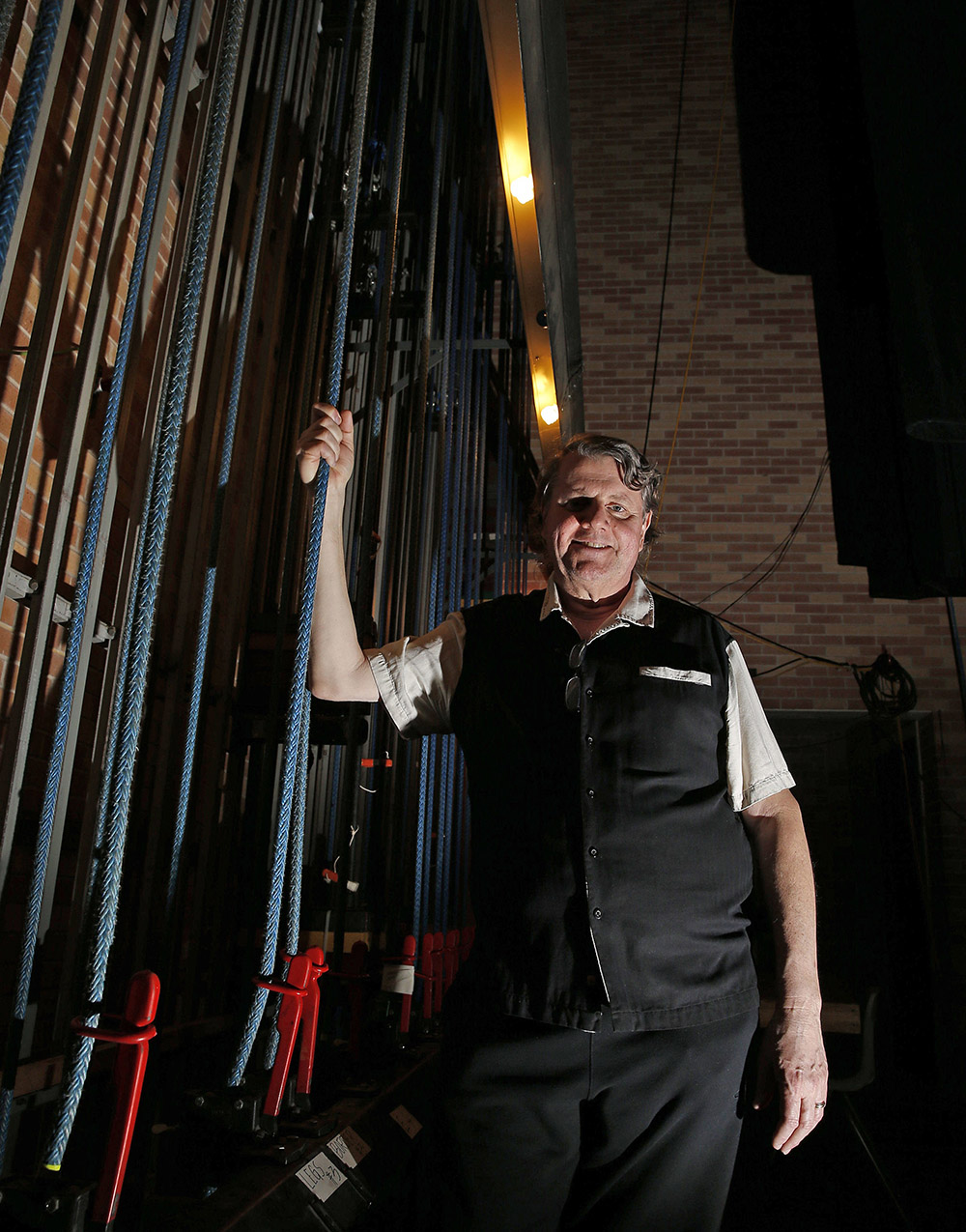 RESEARCH DEFINED BY FILM STUDIES
RESEARCH DEFINED BY FILM STUDIES
Since arriving at the University of Nebraska at Kearney 26 years ago, Umland has served as associate dean, interim dean, interim director of the Museum of Nebraska Art and English Department chair, a position he holds today.
Umland’s scholarly research is diverse and includes a number of vehicles.
He’s published four books and has signed contracts for three additional books in the future. He has written numerous articles, book chapters and book reviews; delivered several guest lectures; sold concepts for theatrical plays; published poems; optioned screen-plays to Hollywood studios; and directed play productions for the UNK Theatre Department.
“I get bored easily, so some of that eclecticism is attributed to that. I would hate to be considered a dilettante. Film scholar is primarily my work and the best way to define me. Books, screenplays and film is my focus, and they’re all connected.”
While he admits his research is defined by film studies, Umland also specializes in media studies, popular culture and literary theory.
“My passion is learning, and that drives me and keeps me motivated. If I wasn’t discovering, I wouldn’t be able to push forward. The end product is rarely my motivation for research. Getting there is what I enjoy.
“I learn a lot from researching and writing, and I have become so much better at self-teaching. I’m proud of where my research has gone. I feel confident in it and good about what I’ve accomplished.”
Umland’s advice to somebody tackling his first research project?
“Be prepared for adversity. Not all people will support what you are doing. In fact, it rarely goes smoothly. Research is difficult. Embrace that difficulty and don’t be afraid of criticism. That is part of the process, and you will be better for it.”
Suprisingly, writing is the most difficult part of Umland’s research. “Writing is hard for me. It doesn’t come easy. Probably because I try to do too much and always over-intellectualize it.”
Often, he approaches writing with the same tenacity he brings to other areas of his research.
“I think one of my strengths is that I dig in and will not give up. I will not, and cannot, take no for answer. I will work on something until I get it. I can be very stubborn.”
A great researcher comes up with ideas that nobody has talked about, says Umland.
“I think I’m good at finding those. When I see an area not addressed, I try to figure out why somebody hasn’t done that. And then you figure out the proper approach. Is it a sensitive issue? Is it a topic people are afraid to approach or what? Once you sort that out, you find a way to talk about it.”
‘THE TIM BURTON ENCYCLOPEDIA’
Umland’s latest research project – “The Tim Burton Encyclopedia” – was released this summer and highlight’s one of Hollywood’s most successful and distinctive filmmakers.
Burton is recognized for his early work as an animator for Disney and his unique takes on iconic characters such as Batman and Alice in Wonderland. He also is known for his dark humor and quirky horror, played out in popular films such as “Pee-Wee’s Big Adventure,” “Beetlejuice, “Edward Scissorhands” and “Sleepy Hollow.”
“Tim Burton was a student of Disney, and he’s never fallen too far from that tree. That’s part of his success,” explains Umland. “This was a fun project because I like fantasy and that kind of gothic experience he works into his films. I really enjoy those silly, child-like and fun films like “Beetlejuice” and “Pee-Wee’s Big Adventure.’”
“The Tim Burton Encyclopedia” focuses on every stage of Burton’s career as a director, producer, artist and writer, including his early animated short films such as “Frankenweenie.”
Umland agrees with reviews indicating his book appeals to scholars, researchers and fans.
“(Burton’s) story appeals to any audience. He is a gifted artist and storyteller,” says Umland. “He’s managed to negotiate the worlds of art and commerce. On one hand, his films remain very distinctively Tim Burton films. And yet, his films are hugely successful. I love his sense of humor and the energy of his films. Nobody does it quite like him.”
It started as simple weekend trips to record stores.
Umland and his high school buddies would catch rides with their band director from Humboldt, Kan., to nearby Kansas City and Wichita, where they would visit record stores and go through cutout bins of discounted albums.
“I always loved music, and that interest turned into my hobby of collecting. By the time I was in college, I was a pretty serious collector.”
Umland owns thousands of albums. Some are displayed in his home. Others are catalogued and stored in custom cabinets built specifically for his collection.
“I think my love of album collecting is definitely connected to my research and that love of detail and minutia,” says Umland. “The collecting and organizing of information, those details are enjoyable to me.”
The expansive collection includes many rock classics from artists such as Pink Floyd, Elvis, Led Zeppelin, The Beatles, King Crimson and Yes.
Umland’s prized album is “Meet the Residents” by the American avant-garde group The Residents. Released in 1974, the cover was a parody of The Beatles “Meet the Beatles!” album and is valued at more than $1,000.
“The value and money don’t matter. I go after records with attractive covers, albums I have a personal connection with or those that have a certain song that resonates with me. Album collecting is personal to me.”
Umland cherishes the first records he owned, Steppenwolf’s “Born to Be Wild” and the “2001: A Space Odyssey” soundtrack.
“CDs don’t do it for me. I need to have the 12-inch vinyl with the cool artwork,” Umland says.
ALWAYS CHALLENGING STUDENTS
Umland’s career in education occurred somewhat unexpectedly.
“My parents were very practical-minded people, and they wanted me to pick a good, practical occupation that paid well. They thought I should be a pharmacist, which is very funny now,” laughs Umland.
He was on the path to being a pharmacist, spending two years at University of Kansas taking pre-med courses.
The idea of teaching came after Umland had already decided to attend the University of Nebraska Medical Center. “The Friday before classes started, I told my parents I couldn’t become a pharmacist,” Umland says. “I told them I couldn’t go on and that I wanted to focus on English.”
The deposit was sent in and classes were assigned.
“But there was no argument. It wasn’t a knock down, drag out conversation with my parents,” Umland says. “The support was there, and they trusted my judgment. They said ‘Okay then,’ and we moved on. That was the best thing my parents ever did for me.”
Umland credits several UNL faculty members for their mentorship. Among them: English professors Linda Pratt, Bruce Erlich and Paul Olson.
“These were brilliant people. They encouraged my intellectual exploration, led by example and inspired me through their research,” Umland says. “They were tremendous inspirations who offered me great support and encouragement.
“My theory of teaching has always been to take a little bit of yourself and also steal little bits from teachers you liked. I certainly took from them,” adds Umland. “I can’t say enough about the professors and teachers I’ve worked with, in Lincoln and Kearney. The University of Nebraska has been very good to me.”
Like his classroom mentors, Umland always looks to challenge students.
“How do we look at problems and acquire information? How do we form world views? I do spend a lot of time thinking about that,” Umland explains. “I’m not afraid to take on things and lay the groundwork for a problem. I try to challenge students in an intellectual way. At the same time, I try to be down to earth and approachable.”
Working in education is “transformative,” says Umland.
“I can’t imagine doing anything else. When you look at me, you can see what public education can do for a person,” he says. “Whatever I would be now, if I had not had the education, would be a person I wouldn’t want to know. I don’t know what I would look like without education and my work in education.”
 SAM UMLAND
SAM UMLAND
Title: Professor, chair of the English Department
College: Fine Arts and Humanities
Education: Bachelor of Arts, University of Nebraska-Lincoln, 1979;
Master of Arts, UNL, 1981; Ph.D., UNL, 1987
Years at UNK: 26
Career: English instructor, UNL, 1981-88; University of Nebraska
at Kearney, 1988-present.
Family: Wife, Rebecca, UNK English professor; daughter, Lauren Miller, of Phoenix; sons Andrew, of Lincoln, and John, of Kearney.
Hobbies/Interests: Collecting rock, blues and jazz records.
Honors/Awards: Pratt-Heins Distinguished Research Award, 2004; “Who’s Who Among America’s Teachers,” 1998 and 2002.
Areas of research/specialization: Literary theory, popular culture, film studies, media studies.
Courses taught: Writing for the Stage and Screen, Literary Theory; Sociology of Literature; Electronic Literacy; History of the Motion Picture; Film as Literature; Studies in a Literary Genre: Play and Film; Religion and Film; Popular Literature; The Hollywood Novel/The Hollywood Movie; Fiction of Philip K. Dick; Introduction to Literature: Non-Western Civilization; Introduction to Literature: American; Reading and Writing About Literature; Writing About Popular Music.
Recent Published Articles:
• “The Tim Burton Encyclopedia,” Summer 2014
• “Donald Cammell: A Life on the Wild Side,” 2006
• “World of Blood and Fire: Lang, Bergman, and The Serpent’s Egg,” 2012
• “Burn, Witch, Burn: A First Look at the Scandinavian Horror Film,” 2005
• “Cassandra Among the Cyborgs,” or “The Silicon Termination Notice (on Philip K. Dick’s “Man, Android and Machine”), 2002
-30-
